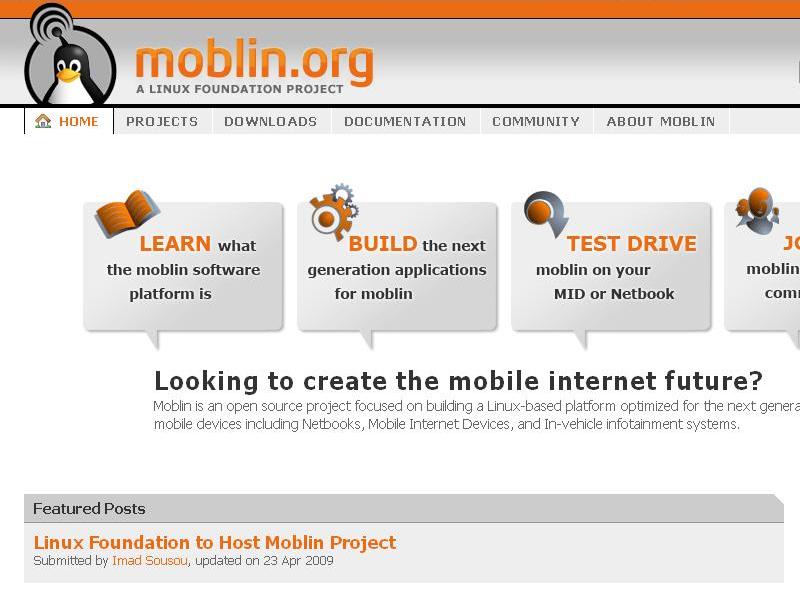
The name Moblin is an abbreviation of 'mobile Linux', and it's a standard platform for those dinky little computers we've been seeing so much of lately.
Fantastic! One standard distribution – just what we always wanted!
That would be great, but it isn't the project's aim. The idea is to produce one open platform that runs on all Intel Atom-based netbooks and mobile internet devices from which developers can produce their own netbook distros.
So what makes Moblin any better than the Linux distribution that comes with my netbook by default?
The aim of Moblin is to make it easier to get the same software across different netbooks, as the machines will all be using the same base.
Netbooks typically run their own hardware and in-house software, and while it's always great to have choice, this makes life difficult for developers, who have to tweak and repackage their product for each netbook on the market.
Standards are all very well, but how will Moblin make my netbook better?
Get daily insight, inspiration and deals in your inbox
Sign up for breaking news, reviews, opinion, top tech deals, and more.
The focus is on what netbook users spend most of their time doing. The interface will be very modern and easy to use, and it will integrate with all the web services you use.
Not only that, but Moblin's does-what-it-says-on-the-tin 'Fast Boot' feature will have devices running on flash or solid-state storage booting in five seconds (and those with IDE/SATA hard disks booting in 10).
My netbook already boots pretty quickly. Will Moblin do anything else?
As well as its custom audio and connection applets, Moblin's priority is security. The project is working to ensure that applications marked as 'unsafe' or 'unknown' are isolated from those you know and trust so that in the event that they go bad they'll be able to cause less damage (this is commonly called application sandboxing).
Though there are already security measures of this kind used within the Linux kernel, the project also wants to ensure that some previously unused functionality is implemented so applications only get access to the files and information they need.
But how will the project manage that?
There's a new security measure added to recent Linux kernel releases named CLONE_ NEWNS, which enables the kernel to create a 'namespace'. When processes from the system's applications enter the namespace, they only have access to the files and processes that the namespace has defined.
This could possibly mean that Moblin will have two major namespaces for 'trusted' and 'untrusted' applications, within which each application can have their own dedicated one. However, though they have decided to use this technology, they have not yet decided how to implement it, so we're really only speculating at this stage.
That makes the whole project seem a little half-baked… surely they're just tweaking the existing Linux kernel and giving it a new name?
It's true that at the moment Moblin is primarily a Linux kernel tweaked for the Intel Atom processor, but its plans are far more wideranging, such as a really attractive framework for GUIs and the ability to integrate all your favourite web services into your desktop environment.
The Moblin team have set up each feature they want as a project and then set those projects goals. Some developers who are then allocated these projects then try to create their own solution, only to find that there is a more elegant way to achieve their aims already provided by the Linux kernel (namespaces, in the case of the application sandboxing).
Web services integrated into the desktop eh? That sounds like Moblin netbooks will offer me easier access to Facebook, Twitter and Tuxradar…
Absolutely – but the software dealing with it (which is called Mojito) is also in alpha. It currently supports Twitter and Flickr, and in future it will enable you to keep track of your internet social life, with aggregation for the more popular social networking sites, photo sharing and any blogs or news sites you wish to follow.